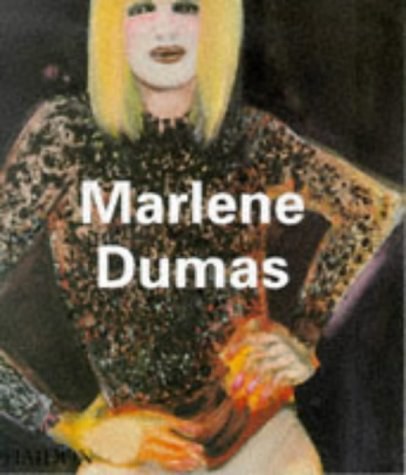
Sylvain Hellegouarch《CherryPy Essentials》
书刊介绍
内容简介
This book covers the CherryPy library for Python web development from its history and installation through its main features and core concepts to its integration with Python and other products to construct, test, and deploy a sample photoblog application. The author Sylvain Hellegouarch is dedicated to the development of free software projects and has been coordinating and administrating the community efforts around the CherryPy project since 2004. The approach based on an example application introduces many other common Python libraries, providing transferable skills also relevant for non-web Python projects. CherryPy is a Python library for web development that allows developers to build web applications in the same way as any other object-oriented Python program. Enriched by several years of active development, it has become one of the most established toolkits for building solid and high-performance web applications in Python. CherryPy abstracts the complex low-level HTTP protocol into an easy-to-use interface that respects Python idioms. The library aims at being simple to learn for a beginner while offering the most advanced features to fluent Python developers. For these reasons CherryPy was chosen to be at the heart of the popular and feature-rich TurboGears web framework. CherryPy-powered web applications are stand-alone Python applications with their own embedded multi-threaded web server, but can also run behind Apache or IIS for scalability. . CherryPy installation using tarball, egg, and subversion . The CherryPy library in depth: its design and how to use it . Using CherryPy with common Python and non-Python products . Object Relational Mapping with SQLObject, SQLAlchemy, and Dejavu . Web Services via REST and the Atom Publishing Protocol . AJAX and client-side scripting via MochiKit . Unit, functional, and load testing . CherryPy, Apache, and lighttpd deployment solurions The book starts with two chapters dedicated to CherryPy itself, its history and installation. Then it moves through a gentle introduction to the main features and concepts of CherryPy to a thorough review of its core capabilities. After laying this foundation the book dives into a real-world example, detailing important steps in the creation of a photoblog application. These chapters cover database manipulation via Object Relational Mapping (ORM), using web services to enhance the application, and client-side scripting through AJAX. Finally, the book covers the need for unit, functional, and performance testing before closing with deployment solutions for a CherryPy-based application. Who this book is written for This book is principally geared towards Python web developers, who are looking to add the power of the CherryPy library to their existing Python skillset. It assumes a good working knowledge of Python . Although the CherryPy toolkit is at the core of the book, many other common libraries are introduced. TABLE OF CONTENTS SUMMARY 1.Introduction to CherryPy 2.Download and Install CherryPy 3.Overview of CherryPy 4.CherryPy in depth 5.A photoblog application 6.Web Services 7.The presentation layer 8.Ajax 9.Testing 10.Deployment
作品目录
Preface 1
Chapter 1: Introduction to CherryPy 7
Overview 7
History of CherryPy 8
The Community 9
CherryPy Project Strengths 10
Beyond CherryPy 11
Through the Book 11
Summary 12
Chapter 2: Download and Install CherryPy 13
Requirements 13
Overview 14
Installation from a Tarball 16
Installation through Easy Install 18
Installation from Subversion 20
Testing your Installation 23
Keeping CherryPy Up to Date 23
Summary 24
Chapter 3: Overview of CherryPy 25
Vocabulary 25
Basic Example 26
Built-In HTTP Server 32
Internal Engine 32
Configuration 33
Object Publisher Engine 36
Library 38
The Autoreload Feature 39
The Caching Module 39
Table of Contents
[ ii ]
The Coverage Module 39
The Encoding/Decoding Module 40
The HTTP Module 40
The Httpauth Module 40
The Profiler Module 40
The Sessions Module 41
The Static Module 42
The Tidy Module 42
The Wsgiapp Module 42
The XML-RPC Module 42
Tools 43
Error and Exception Handling 44
Summary 49
Chapter 4: CherryPy in Depth 51
HTTP Compliance 51
Multiple HTTP Servers 52
Multi-Threaded Application Server 54
URI Dispatching 55
HTTP Method Dispatcher 55
Routes Dispatcher 57
Virtual Host Dispatcher 58
Hook into CherryPy's Core Engine 59
CherryPy Toolbox 61
Basic Authentication Tool 62
Caching Tool 63
Decoding Tool 64
Digest Authentication Tool 65
Encode Tool 66
Error Redirect Tool 67
Etag Tool 67
Gzip Tool 69
Ignore Headers Tool 69
Log Headers Tool 70
Log Tracebacks Tool 71
Proxy Tool 72
Referer Tool 73
Response Headers Tool 74
Trailing Slash Tool 75
XML-RPC Tool 76
Toolbox 77
Creating a Tool 77
Table of Contents
[ iii ]
Static Resource Serving 81
Using the Staticfile Tool to Serve a Single File 81
Using the Staticdir Tool to Serve a Complete Directory 83
Bypassing Static Tools to Serve Static Content 85
WSGI Support 86
Hosting a WSGI Application within the CherryPy WSGI Server 87
Hosting a CherryPy WSGI Application within a
Third-Party WSGI Server 89
Summary 90
Chapter 5: A Photoblog Application 91
A Photoblog Application 91
Photoblog Entities 92
Vocabulary 94
DBMSes Overview 95
Relational Database Management System (RDBMS) 95
Object-Oriented Database Management System (OODBMS) 96
XML Database Management System (XMLDBMS) 97
Object-Relational Mapping 97
Python Object-Relational Mappers 98
Photoblog Application Entity Modeling 108
Mapping Entities 109
Units and UnitProperties 111
Associating Units 112
The Sandbox Interface 112
Querying Units 113
Extending the Data Access Layer 114
Summary 117
Chapter 6: Web Services 119
Traditional Web Development 119
Separation of Concerns 121
REST 122
Uniform Resource Identifier 123
HTTP Methods 124
Putting it Together 128
REST Interface through CherryPy 130
Atom Publishing Protocol 131
Atom XML-Document Format 132
APP Implementation 134
Summary 136
Table of Contents
[ iv ]
Chapter 7: The Presentation Layer 137
HTML 137
XML 138
XHTML 138
CSS 139
DHTML 141
Templating 142
Kid—The Templating Engine 142
Overview 142
Kid's Attributes 144
XML-Based Templating Language 144
Variable Substitution 144
Conditional Statement 144
Looping Mechanism 145
Extensibility 146
Other Attributes 147
Photoblog Design Preparation 147
Targetting the User Agent 147
Tools 148
Global Design Goals 148
Design Directory Layout 149
CherryPy—Encapsulating the Template Rendering Process 149
Photoblog Design in Detail 151
Basic Structure 151
Mochikit 156
Developing the Photoblog Design 157
HTML Code 157
Adding a Link 158
Handling the End-User Actions 158
Amending the Template 159
Amending the CSS 159
Let's be More Flexible... 160
Summary 161
Chapter 8: Ajax 163
Rise of the Rich-Client Applications 163
Ajax 164
Ajax—Advantages and Drawbacks 165
Behind the Scene: XMLHttpRequest 166
Performing a GET Request 167
Performing a Content-Negotiated GET Request 168
Performing a POST Request 169
Performing PUT, HEAD, or DELETE Requests 170
Table of Contents
Cookies 170
Authentication using Digest or Basic Schemes 170
JSON 176
Applying Ajax to our Application 178
Defining the Required Namespaces 178
Implementing Namespaces 179
Adding Methods to the Classes 179
Method to Create a New Album 183
Method to Update an Existing Album 190
Method to Delete an Existing Album 190
Summary 191
Chapter 9: Testing 193
Why Testing 193
Planning a Test 194
Common Testing Approach 195
Unit Testing 195
unittest 196
doctest 201
Unit Testing Web Applications 205
Performance and Load Testing 213
Functional Testing 218
Application under Test 219
Selenium Core 222
Selenium IDE 227
Selenium Remote Control 231
Summary 233
Chapter 10: Deployment 235
Configuration 235
CherryPy—Web and Engine Configuration System 235
Photoblog Application Configuration System 238
Deployment 240
Apache with mod_rewrite Module 241
Lighttpd with mod_proxy Module 243
Apache with mod_python Module 244
mod_python with WSGI Application 246
SSL 246
Creating a Certificate and a Private Key 247
Using the CherryPy SSL Support 248
Using the lighttpd SSL Support 250
Using the Apache mod_ssl Support 251
Summary 251
Index 253
相关推荐
-

田海《零基础学UI》
本书为零基础人士量身编写,文章内容和教程步骤都通俗易懂,适合UI设计爱好者的非专业人士或从事平面设计、网页设计等的专业人士
-

《黑客攻防技术宝典》书籍《黑客攻防技术宝典》
《黑客攻防技术宝典:系统实战篇(第2版)》由世界顶级安全专家亲自执笔,详细阐述了系统安全、应用程序安全、软件破解、加密解密等
-

打赢增长战:企业第一增长法
《打赢增长战:企业第一增长法》内容简介:四大增长模型助力企业迈向—— 解决战略、产品、用户、团队的困境 本书从增长法这一角度
-
![[美] 盖尔·格里特·汉娜《设计元素》](http://oss.shudanhao.com/caiji/chazidian/2023/37616.jpg)
[美] 盖尔·格里特·汉娜《设计元素》
《设计元素》是一本供学生和设计者学习的参考书。作为一本设计的启蒙读物,它包含了制作各种简单形体及创造复杂方法去解决困难的
-
![[美] 莱芬韦尔《敏捷软件需求:团队、项目群与企业级的精益需求实践》](http://oss.shudanhao.com/caiji/chazidian/2023/2003.jpg)
[美] 莱芬韦尔《敏捷软件需求:团队、项目群与企业级的精益需求实践》
《敏捷软件需求:团队、项目群与企业级的精益需求实践》全面介绍了如何在敏捷环境中管理软件需求,全书共四部分24章。第I部分提出
-

人人都能学会的刷屏文案写作技巧
《人人都能学会的刷屏文案写作技巧》内容简介:“后来的我们,为了谁四处迁徙,为了谁回归故里?”真奇怪,这些字每一个都认识,每
-

每晚睡前原谅所有的人和事
《每晚睡前原谅所有的人和事》内容简介:每晚入睡前,想着一天的劳累和辛苦,想着过往几十年的辛酸与不易,想着那些我们曾经错过和
-

透过经济看国学
《透过经济看国学》内容简介:中国传统文化主要由儒、佛、道三家文化组成,如果把中国传统文化比喻成一只大鹏,那么其身体就是儒家
-

找对人:企业人才招聘与选拔方法精要
《找对人:企业人才招聘与选拔方法精要》内容简介:本书聚焦企业“选人”之道。书中对人才标准的制定、人才的来源、人才招聘和选拔
-

工业4.0背景下的两岸产业合作
《工业4.0背景下的两岸产业合作》内容简介:本书通过大量一手资料及数据,以工业4.0为背景探讨两岸产业合作,构建两岸产业合作研究
-

Kafka入门与实践
《Kafka入门与实践》内容简介:本书中的大量实例来源于作者在实际工作中的实践,具有现实指导意义。相信读者阅读完本书之后,能够全
-

金融的逻辑(套装共2册)
《金融的逻辑(套装共2册)》内容简介:《金融的逻辑》(上、下)是陈志武教授关于金融的发展历史、演变、影响和作用的一部作品,由
-

网络管理员教程-全国计算机技术与软件专业技术资格(水平)考试指定用书-(第4版)
网络管理员教程-全国计算机技术与软件专业技术资格(水平)考试指定用书-(第4版) 本书特色本书按照全国计算机技术与软件专业技术资格(水平)考试要求编写,内容紧扣...
-

楊振甫|黃則佳《打開服務設計的秘密》
◎這是一本專為您個人及企業打造的工具書您是否正在不斷地尋求組織創新思考的方法?打造顧客整體消費體驗的方式?技術創新應用的
-

《A Semantic Web Primer》书籍《A Semantic Web Primer》
ThedevelopmentoftheSemanticWeb,withmachine-readablecontent,hasthepotentialtorevo...
-

Arduino互动设计
《Arduino互动设计》内容简介:本书使用Arduino硬件平台和Mixly图形化编程工具,从简单的“点亮创客之灯”开始,以生活中常见的具体
-

季伟《IPTV关键技术及应用》
本书是一本专门介绍IPTV技术的图书,书中全面而系统地介绍了IPTV的体系结构、基本原理和各种关键技术,包括前端系统、编码技术、
-

老福州
《老福州》内容简介:老福州三山两塔一座楼、船与海的特异文化、名人与故居、近代福州不屈的英雄气、老手艺、习俗与美食、轶闻旧事
-
![[德] 希茨利尔《语义Web技术基础》](http://oss.shudanhao.com/caiji/chazidian/2023/1598.jpg)
[德] 希茨利尔《语义Web技术基础》
《世界著名计算机教材精选:语义Web技术基础》主要介绍了语义万维网基础技术。《世界著名计算机教材精选:语义Web技术基础》从实用
-

《深入搜索引擎》书籍《深入搜索引擎》
《深入搜索引擎:海量信息的压缩、索引和查询》是斯坦福大学信息检索和挖掘课程的首选教材之一,并已成为全球主要大学信息检索的主





